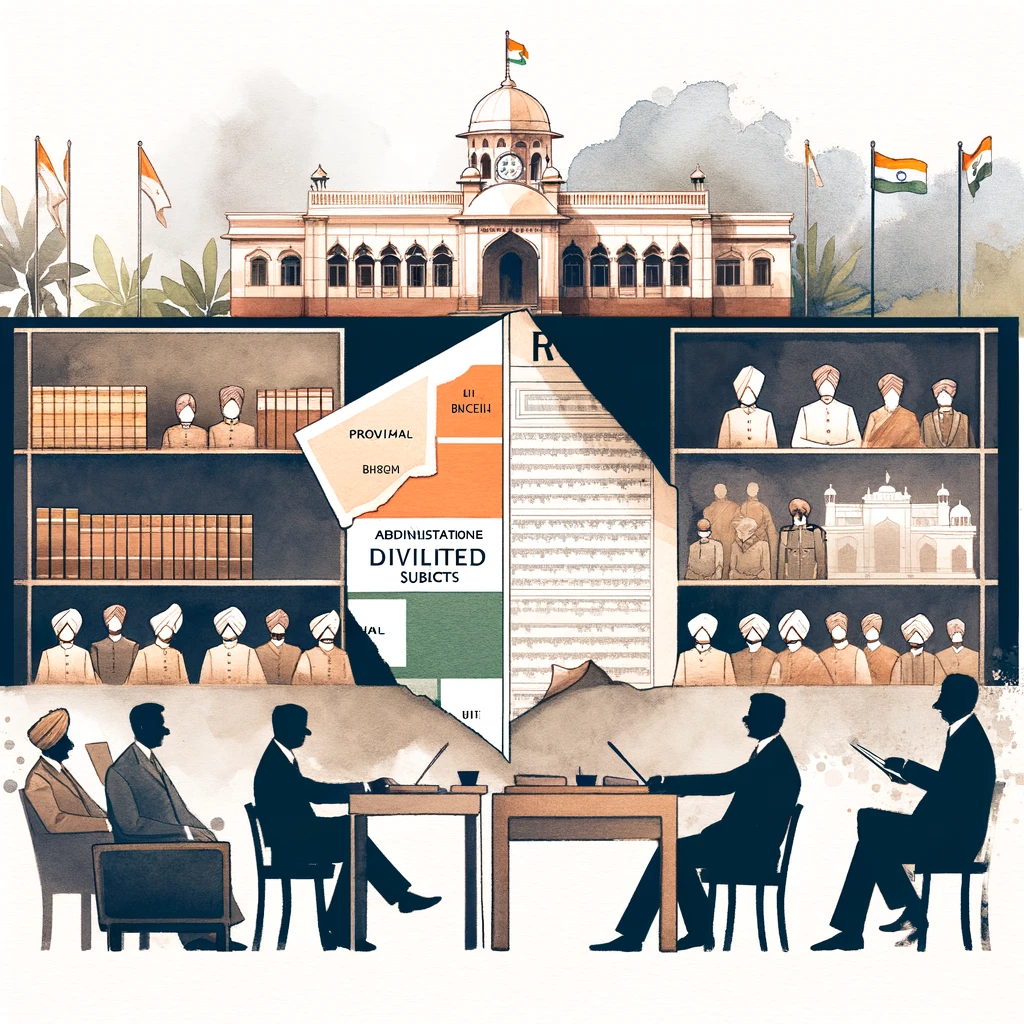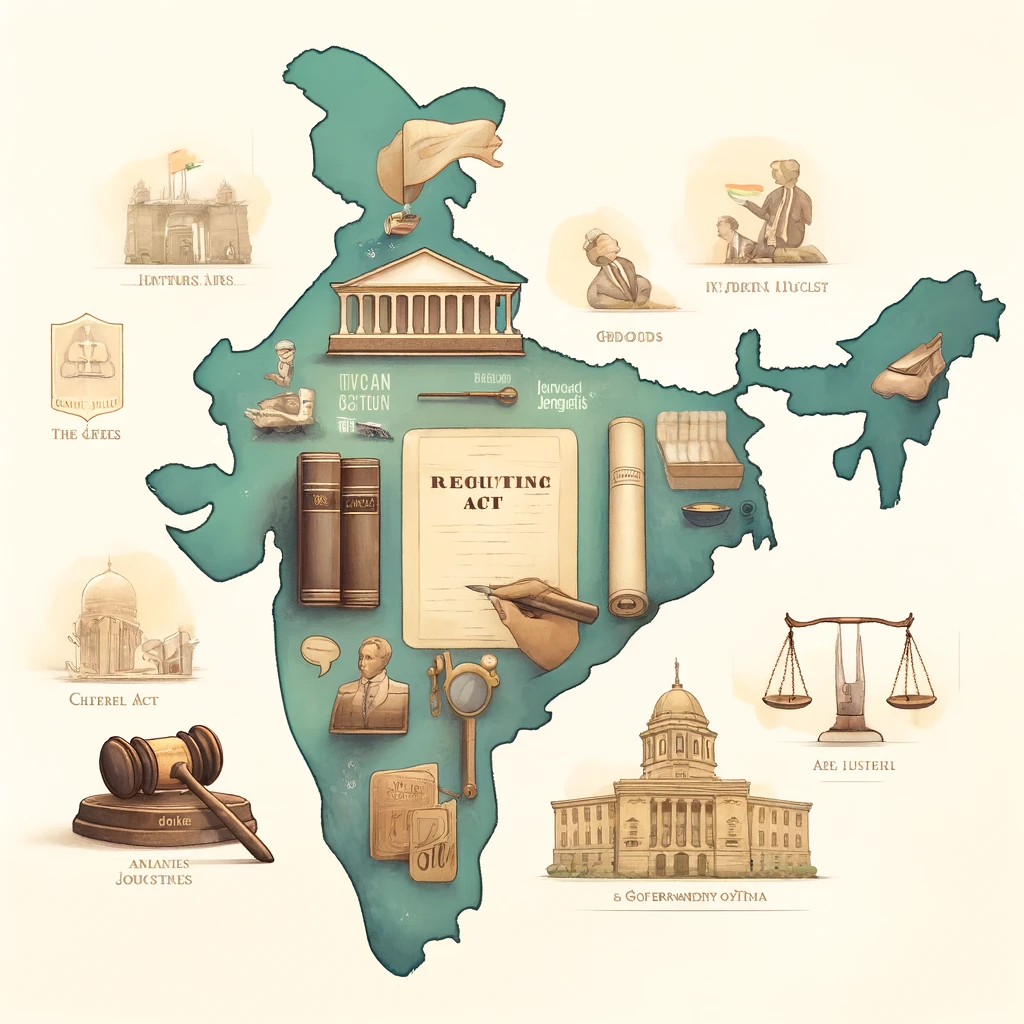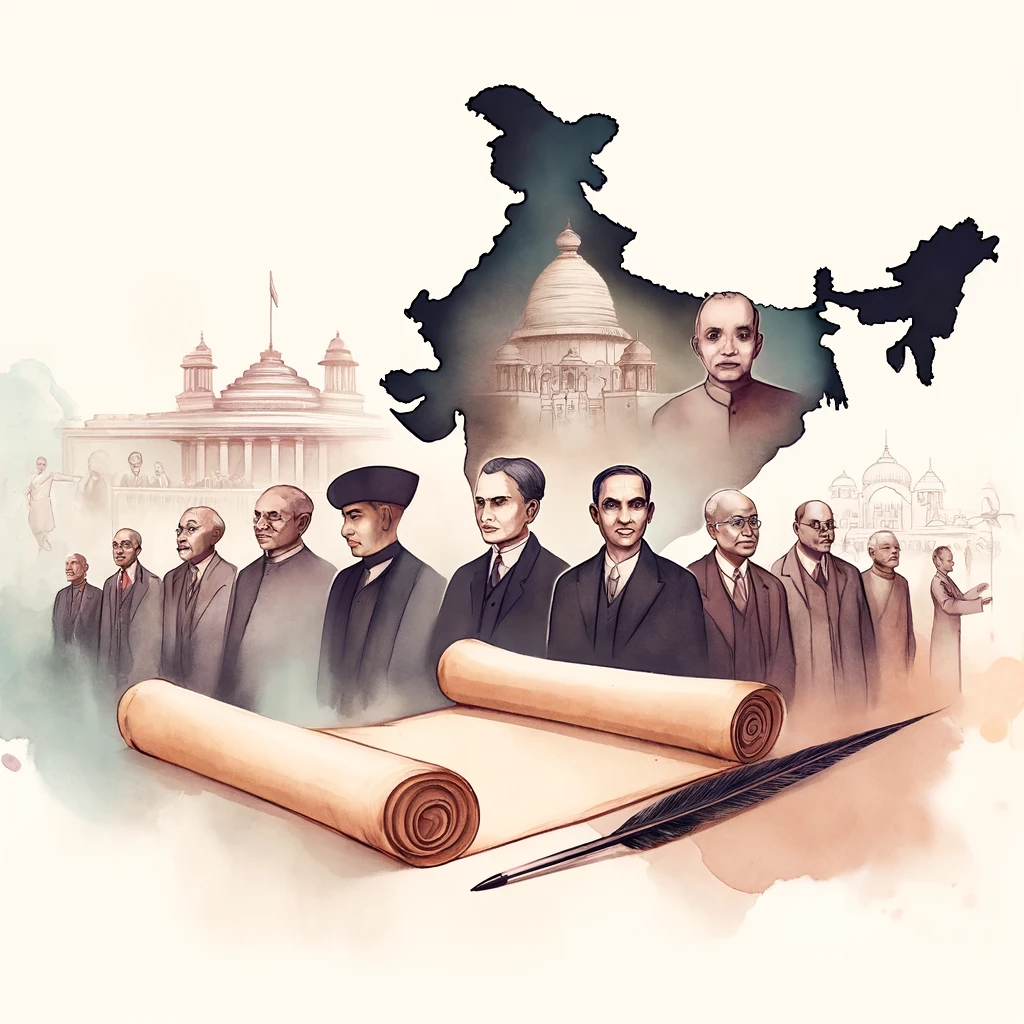The Government of India Acts of 1919 and 1935 were pivotal in shaping the constitutional framework of India. They introduced significant administrative and legislative reforms that laid the groundwork for the Indian Constitution. This article explores the impact of these acts on the development of India’s constitutional structure, highlighting their key features and evaluating their successes and limitations.

1. Dyarchy Under 1919 Act: Division of Subjects and its Impact on Provincial Administration
The Government of India Act of 1919 introduced the system of dyarchy in the provinces, a significant administrative innovation aimed at increasing Indian participation in governance.
- Division of Subjects: The act divided subjects of administration into ‘transferred’ and ‘reserved’ categories. Transferred subjects, such as education, agriculture, and public health, were administered by Indian ministers accountable to the legislative councils. Reserved subjects, including finance, law and order, and irrigation, remained under the control of the Governor and his executive council.
- Impact on Provincial Administration: This division created a dual system of governance in the provinces. While it allowed Indians to manage certain areas, the reserved subjects ensured continued British control over critical functions. The dyarchy system aimed to train Indian leaders in self-governance, although it faced significant challenges due to the inherent limitations of power-sharing and frequent conflicts between Indian ministers and British officials.
The dyarchy under the 1919 Act was a step towards self-governance but highlighted the complexities of dual administration and the reluctance of the British to fully relinquish control.

2. Bicameralism and Direct Elections: Introduction of Representative Institutions
One of the notable features of the Government of India Act of 1919 was the introduction of bicameralism and direct elections, which laid the foundation for a representative government.
- Bicameral Legislature: The act established a bicameral legislature at the center, consisting of the Council of State (Upper House) and the Legislative Assembly (Lower House). This structure aimed to provide a broader base for legislative discussions and decision-making.
- Direct Elections: For the first time, direct elections were introduced for the Legislative Assembly. Although the franchise was limited, it marked a significant move towards democratic representation. The act also expanded the legislative councils in the provinces and allowed more Indians to participate in the electoral process.
These measures were crucial in promoting political participation among Indians and served as a precursor to the democratic institutions envisaged in the Indian Constitution.
3. Provincial Autonomy under 1935 Act: Transfer of Subjects and Administration to Indian Ministers
The Government of India Act of 1935 furthered the reforms initiated by the 1919 Act by granting provincial autonomy, a significant milestone in India’s constitutional development.
- Transfer of Subjects: The act abolished the dyarchy introduced in 1919 and provided for full provincial autonomy. All subjects were now administered by ministers responsible to the elected provincial legislatures.
- Administration by Indian Ministers: This autonomy allowed Indian ministers to exercise greater control over provincial administration. It fostered a sense of responsibility and accountability among Indian leaders, preparing them for self-governance.
The move towards provincial autonomy was a critical step in decentralizing power and involving Indians in the administration, setting a precedent for the federal structure of independent India.
4. Federal Scheme and Distribution of Powers: Establishment of a Federal Court
The Government of India Act of 1935 proposed the establishment of a federation of British Indian provinces and princely states, along with a clear distribution of powers between the center and the provinces.
- Federal Scheme: The act envisaged a federal structure with a division of powers between the central government and the provincial governments. Although the federation did not materialize due to the lack of cooperation from the princely states, the idea influenced the federal structure adopted in the Indian Constitution.
- Federal Court: The act established a Federal Court to adjudicate disputes between the provinces and the central government, laying the foundation for an independent judiciary. This court served as a precursor to the Supreme Court of India.
The federal scheme and the establishment of a Federal Court were significant steps towards a structured and balanced distribution of powers, which became integral to the Indian Constitution.
5. The Concept of All India Services: Basis for Central and State Services
The Government of India Act of 1935 introduced the concept of All India Services, which became a cornerstone of India’s administrative framework.
- All India Services: The act provided for the creation of services that would be common to both the center and the provinces, such as the Indian Civil Service (ICS). These services were intended to maintain administrative continuity and efficiency across the country.
- Central and State Services: This concept laid the foundation for the modern Indian administrative system, with services like the Indian Administrative Service (IAS) and Indian Police Service (IPS) playing crucial roles in governance and administration post-independence.
The establishment of All India Services ensured a unified and efficient administrative structure, which was vital for the integration and stability of the nation.
6. Critical Evaluation: Successes and Limitations of the Government of India Acts
While the Government of India Acts of 1919 and 1935 introduced significant reforms, they also had their limitations.
- Successes:
- The acts marked the beginning of a structured and representative form of governance in India.
- They facilitated greater Indian participation in administration and legislative processes.
- The introduction of provincial autonomy and federal schemes laid the groundwork for the federal structure of the Indian Constitution.
- Limitations:
- The dyarchy system under the 1919 Act was complex and led to conflicts between Indian ministers and British officials.
- The 1935 Act’s federal scheme was not fully implemented due to the lack of cooperation from princely states.
- Despite expanding the franchise, the electoral process remained limited to a small, elite segment of the population.
In conclusion, the Government of India Acts of 1919 and 1935 were instrumental in shaping the constitutional landscape of India. They introduced crucial administrative and legislative reforms that paved the way for a democratic and federal structure, despite their inherent limitations. For UPSC aspirants, understanding these acts is essential to grasp the historical context and evolution of the Indian Constitution.


